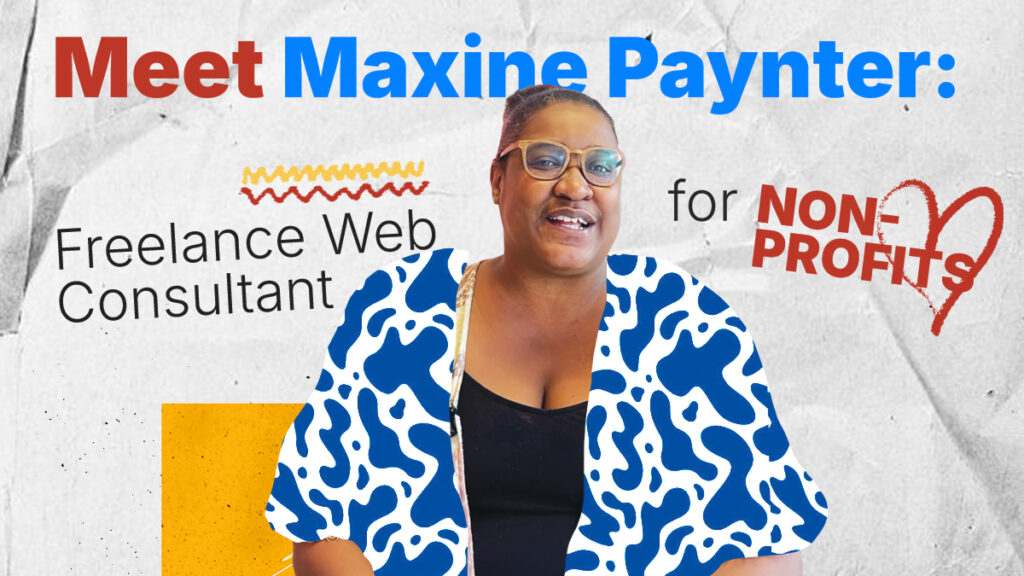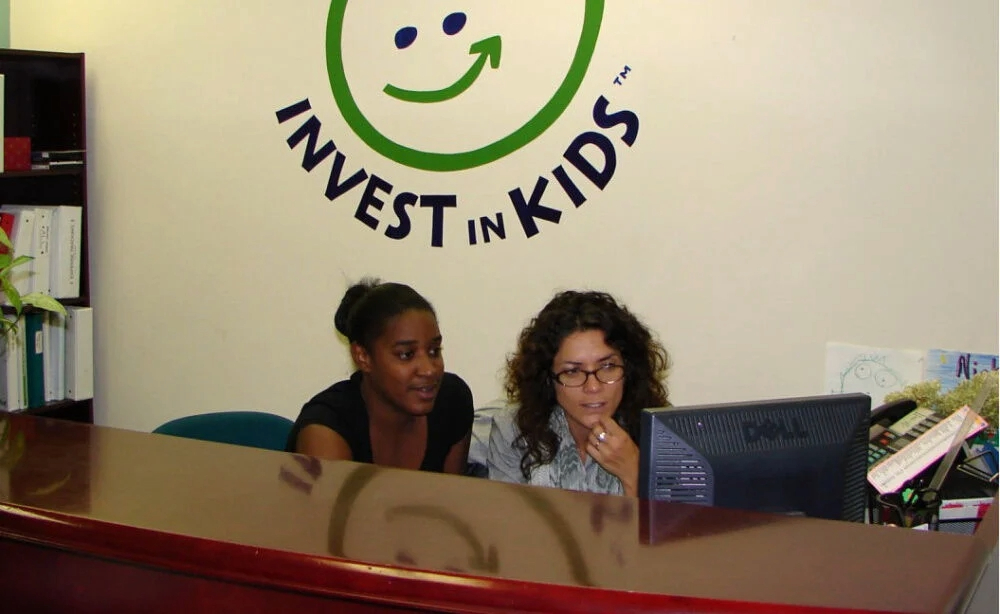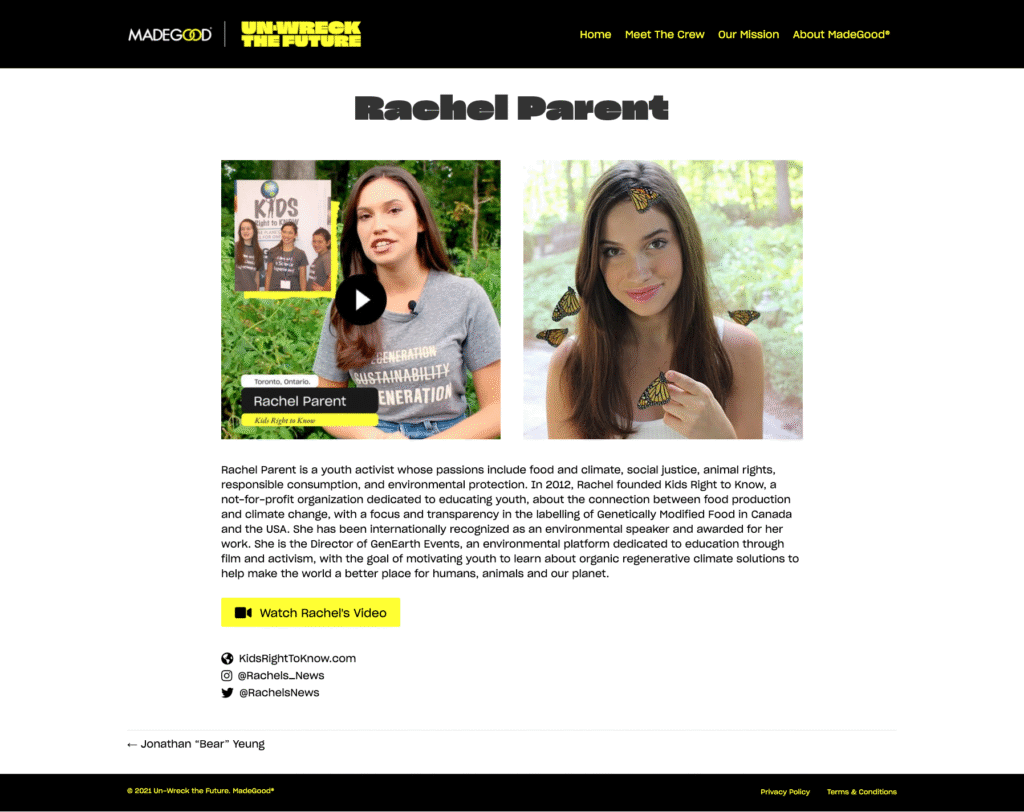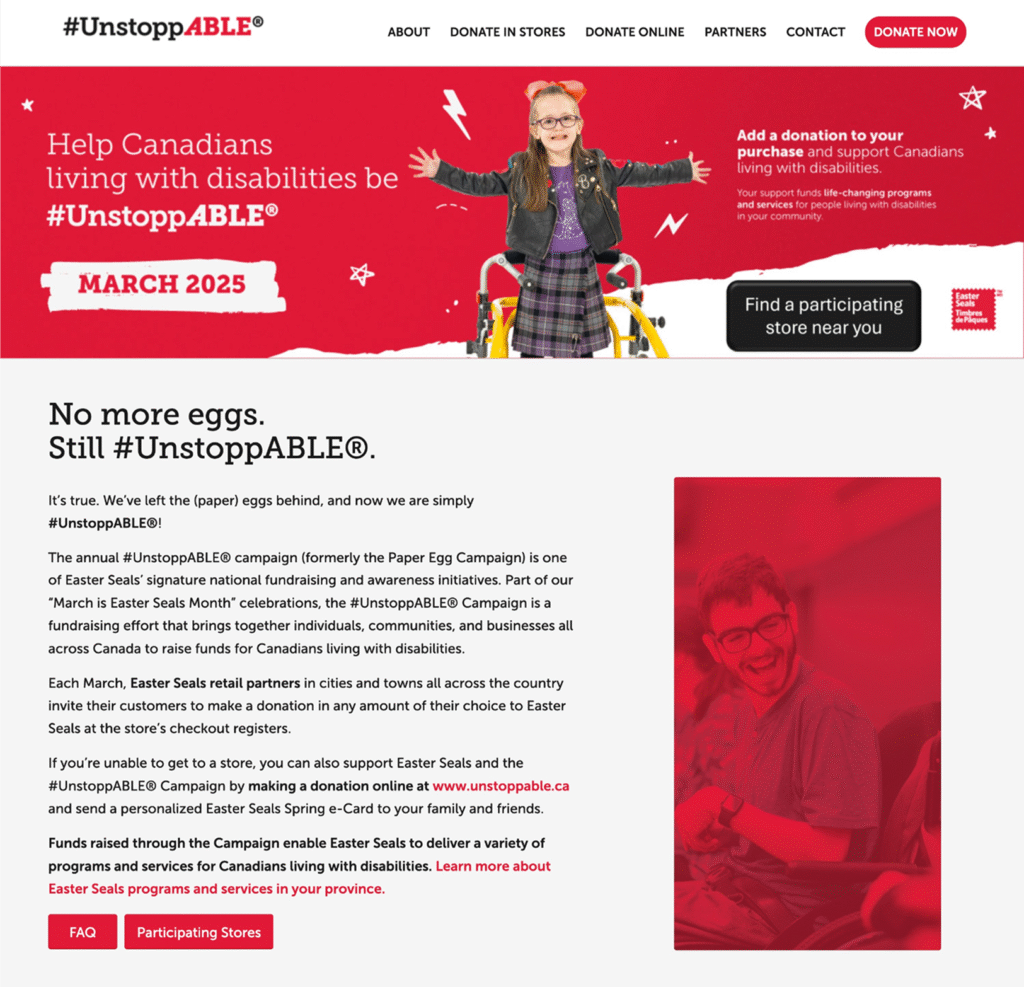Meet Maxine Paynter: Freelance web consultant for nonprofits
Updated September 10, 2025
Maxine is a Toronto-based freelance web consultant who has devoted her career to helping nonprofit organizations grow and strengthen their online presence. With 20+ years in the game and a skill set spanning both front and back-end development, she combines technical expertise with a real passion for social good. Maxine has worked on digital projects for nonprofits like Easter Seals Canada, Orbis Canada, FLAP Canada/BirdSafe, and many more.

How did you start working with nonprofits?
I started with nonprofits as an extra pair of hands, and as the organization’s needs grew and people moved into different positions, I eventually rose up the ladder and got to be more hands-on in the nonprofit space.
Rising up the ladder, how did that work?
The nonprofit I worked for partnered with organizations across Canada to support parents with tools and resources aimed at fostering healthy development during a child’s important first five years. I started out as a receptionist, then opportunities came up around our sales and marketing. So, I worked in the sales and marketing department, and eventually, there was a need for us to build a more digital platform. That’s when I got my first taste of nonprofits online, and it really piqued my interest.
It happened kind of by fluke.
And by fluke, you’ve been here for 20 years
Exactly. I basically started right out of high school.

Maxine at the now-defunct Invest in Kids
What does it mean to be a consultant in the nonprofit space?
What I love about working with nonprofits is that I get to spend my career helping and not just working for some faceless corporation. And I think that’s what really sets working with these organizations apart. You actually feel like you’re making a difference, even in a small way.
It’s an amazing space. You’re providing support to these individuals and organizations that are just really trying to change the world.
There’s not much that surprised me, because I’ve been in this space for so long. As technology changes, my clients and I adapt together.
So you got into web development because of your work with nonprofits, and not the other way around.
Exactly. Exactly.
It can be gruelling. You’re working lots of hours, and it’s difficult. But what I love about this part of my job is being able to say, “Hey, I’ve got you”, from a technological standpoint.
Let me hold your hand. Let me do the legwork. Let me go ask the questions and be the liaison so that you don’t have to think about it. Because the technical piece of online giving is not their core business, it’s secondary. It could be even tertiary for them.
And I think being able to step in and take that off their plate is very helpful.
Do you also work with corporate clients? How do you approach working with nonprofits differently?
Yes, I have and still do work in the for-profit space.
With nonprofits, there’s a lot less red tape, because they just want to get the technical piece done. I can really easily build a rapport and trust, and I have more autonomy in the projects I work on.
With larger organizations, corporations, or even some agencies, there’s a lot of red tape, a lot of opinions and different layers of vetting and approvals.
Not to say that all corporations are like this, but at a nonprofit, there’s this sort of push and pull of let’s make sure that everybody’s good. Whereas with corporations, there can be very rigid timelines, less compassion, and a need to just get it done. I find that challenging and less human.
Do you think that the issue of limited resources contributes to how well you work with nonprofits?
Totally.
A lot of organizations are time poor; they lack resources and/or budgets. There’s often a constraint around how professional or dynamic their sites can be. You might want to have all these videos and have interactive content, when really your budget only covers a four-page flat website. I try to do as much as I can to make the websites feel bigger and better based on whatever budget is available.
How do you navigate having limited resources and still wanting to do the best work for your client?
I think it’s a matter of good faith, you know? You just get it done with the tools that you have. You do your best and hope that it’s going to be as good a product as you can make it.
A restriction could even be not having the needed digital assets, so I go out of my way to look for free stock photography online. That way, even if they don’t know these things exist, let alone having somebody to do it, it gets done.
I want them to look good, work functionally, be fast, and have good SEO. To put out a product that’s anything less than that is not good for me either.

A page from the Un-Wreck the Future website. Built by Maxine for MadeGood.
That makes sense. As someone who’s doing so much, what tools help you stay on top of everything?
What tools help me?
I think a lot of it is just muscle memory. And I know that that’s not really a tool, it’s more of a mindset. “I’ve done this before. So, I know how to hammer this out”.
Obviously, you have to be adaptable. But, in terms of tools and stuff like that, I think it’s being forward-thinking, using your calendars wisely, and being mindful of which clients need what and when. That includes knowing that client X will have a really busy Q1 or knowing that client Y has these big summer events that we have to stay on top of.
Seeing as we’re already on the topic, let’s talk about the future of technology. In the nonprofit world today, what excites you?
Obviously, AI is the biggest buzzword in tech today.
You can’t go anywhere without somebody talking about AI. I feel like in the nonprofit space, AI can be a scary thing to a lot of people. But I think that it can be used to really foster relationships, learn more about your donors and your constituents, if used properly.
The challenge in the space is ensuring that these nonprofit organizations understand that AI is not a scary, bad thing. If it’s used properly, it could really help you connect with your demographic and your donor base.
As someone who builds websites for nonprofits, how do you make them accessible to diverse audiences?
I absolutely love this question.
I am a huge, huge advocate for accessibility online. Sometimes it can be a buzzword, but I think it just needs to be ingrained in what everybody does all the time. And every time I have the opportunity to attend a webinar or a conference around accessibility, I do it because they are always so informative and enlightening.
But it’s also very easy. No, not easy. That’s not the right word. Accessibility is necessary.
Implementing these small changes not only improves your website for people with all ranges of abilities, but also for people in general.
A weird, but effective, analogy is the story of sidewalks at intersections.
Once upon a time, they slanted the edges of sidewalks at the intersections because they needed to improve drainage. But what really happened is it helped people with strollers, walkers, and even people with little kids who can’t step up that high. And so when you change something and make it more accessible, it really is for everybody.
It’s going to improve your SEO and make people more likely to engage with your site. I mean, 22% of online visitors are people with a range of disabilities.
It actually really bothers me when developers don’t take the time to make a site accessible or to even recognize that it might not be…I think it’s lazy. I mean, it’s not overtly hard, and everybody should be implementing these practices.

The homepage of the #Unstoppable website. Built by Maxine for Easter Seals.
This is so interesting. Can you share a few areas to pay attention to?
Colour contrasting. That’s huge. You don’t want to be putting, you know, dark blues on black backgrounds, or like white on yellow. More colour issues include identifying markers with colour. So, you know, yellow, red, green. Somebody who can’t see or has colour blindness can’t associate that content with that colour.
Obviously, making sure that the alt tags for your images are actually accurate and not just vibes. Put some thought into them. Don’t just say it’s a green tree. Maybe say it’s a green tree in a forest with, you know, lots of flowers around.
Navigation is huge too. Make sure that your navigation can be tabbed through with various assistive devices. Some people use blow tools. Some people use their mouse. Some people use their keyboard. So always make sure that your navigation is properly marked up.
That was very helpful. Thank you for sharing. What’s something you know now that you wish you knew when you started out fresh out of high school?
The technology moves at rapid-fire speed, so making sure that you’re staying on top of it is important. But also, recognize the reluctance of nonprofit clients to jump into what can be perceived as bandwagons or fads. It might take a little hand-holding and convincing to take advantage of the technology.
They’re developing strategies for the most marginalized, so they’re not going to sit around talking about “how can AI make this better for me?” They’re not thinking about how much time they can spend on social media to start building their brand. They need people who specialize in those spaces to do that for them, so that their resources are free to do their job, which is changing the lives of the individuals that they work with.
Things are improving, though. I’m now seeing clients actually taking the time and spending the money to get consultants to help with their digital, social, or to produce videos.
We already spoke about future technology. Is there anything you’d like to add to that?
Yeah, I think that the fundraising space can be intimidating at times.
You know, it’s become this, “my friend’s doing a walk, just click the link and go”. So you just sort of click and go through that donation process, which is obviously the end goal, but how do we keep people engaged?
And I think a lot of people want to be engaged, they want to know who to donate to and why. Especially in this time when, let’s be honest, the world is on fire. There are 8 million different organizations that you can choose to give to.
So, how do we get people to choose the organizations that they want to donate to and stay engaged with those organizations? These are thoughts that have been swimming around in my mind for ages. How to make it easier for people to be engaged, how to figuratively hold their hands and help them through the donor experience.
Hi, I’m Maxine Paynter, a web consultant who’s been working in the nonprofit industry for many, many years, and I’ve worked with raisin for 10. I’m excited to be part of the team and a part of, you know, making the world a better place, one online-giving experience at a time.
You can find Maxine at maxinepaynter.com or on her LinkedIn.